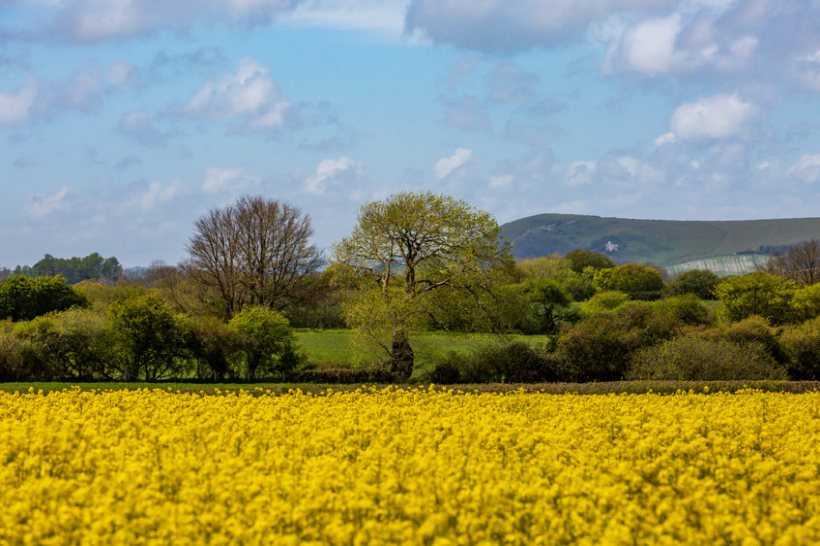
As in previous years, last week’s launch of the Countryside Stewardship scheme sees three components for the 2023 year.
David Morley, head of environment at rural property agency H&H Land & Estates, explores the detail for Higher Tier, Mid-Tier and Capital Grants.
Higher-Tier
Higher Tier is targeted at land that can deliver significant conservation gains, aimed mainly at farms coming out of Higher-Level Environmental Stewardship (HLS) agreements.
It is also targeted at farms with sites of special scientific interest (SSSIs), moorland, woodland, or other high priority habitats.
The main change for 2023 is that the payment rates for many higher tier options have been increased, as previously announced.
Many farms coming to the end of their HLS agreement have been offered the opportunity to extend their agreement by a further 12 months, rather than entering into Higher Tier CS.
In previous years, this has been financially the better option in most cases. With the increase in payment rates, however, the decision to extend an HLS agreement or apply for Higher Tier is less clear cut.
If farmers have recently been offered an HLS extension, it may be worth exploring Higher Tier to work out if that may, in fact, now be the better option for the farm.
Other changes to the scheme include the WD9 Livestock Exclusion supplement, which can now be used in conjunction with upland and moorland options UP1 (Enclosed Rough Grazing), UP2 (Rough Grazing for Birds) and UP3 (Management of Moorland) where complete livestock exclusion is considered necessary to facilitate habitat restoration.
There are also new options for lowland peatland on arable land and grassland to help raise water levels.
And options WD6 & WD12 (Creation of Wood-pasture, outside and inside SDA respectively) are now available on arable land.
For those interested in Higher Tier, application packs must be ordered by 31 March, an initial application needs to be submitted by 29 April 2022.
Farmers need to take act quickly if they want to apply. If they are not already in discussion with Natural England, the chances are their application will not be supported for this scheme year.
Mid-Tier
The second component, Mid-Tier, is aimed at delivering environmental gains at a landscape scale across the wider countryside through 5-year agreements.
Applications can include a 2-year Capital Grants programme for hedge or wall restoration and, if in a target area for water quality, water capital items, such as roofing middens and silage pits.
In a significant change from previous years, agreement holders will be able to apply for another 2-year capital grant programme once their initial programme is complete and claimed for.
For the first time, in 2023, it will be possible to apply for Mid-Tier online. Farm Environment Record and Options Maps will still need to be completed separately and e-mailed to the RPA.
Although some have reduced, the payment rates for many Mid-Tier options have improved. If farmers have previously ruled out Mid-Tier due to low payment rates, it may be worth another look to see if it is now viable.
Other changes for 2022 include that option SW8 (Intensive Grassland Management next to Watercourses) can now be applied for in the uplands (SDA land).
For a Mid-Tier agreement to start on 1 January 2023, the application window runs until 29 July 2022. If CSFO endorsement is needed for water capital items, all the necessary evidence must be provided to them by 20 May.
Capital Grants
This scheme is now open and has a rolling application window, and it will remain open as long as there is budget available; applications can be made online.
Unfortunately, the capital grant rates have not been increased at the same time as option payment rates were reviewed.
Provided they are not being paid to do the same thing twice, farmers already in a Higher-Level Environmental Stewardship (HLS) agreement can also apply for any of the standalone capital grants.
These include: Hedgerow restoration and new hedge planting; dry stone wall restoration; watercourse fencing and water Capital & air quality grants.
There is a separate £20k limit for each of boundary restoration, water capital and air quality grants.
Water Capital Grants continue to be available in much of Cumbria and several other catchments across the north of England.
There has been talk of expanding the water quality target areas to include more catchments, but it is not yet completely clear that these will be fully funded.
Most water capital and air quality grant items must be endorsed by the local Natural England Catchment Sensitive Farming Officer.
